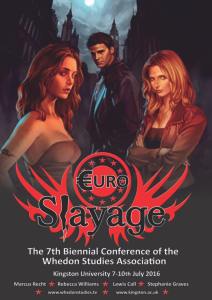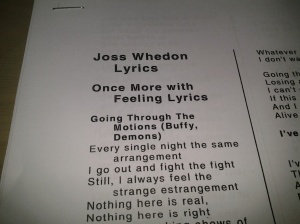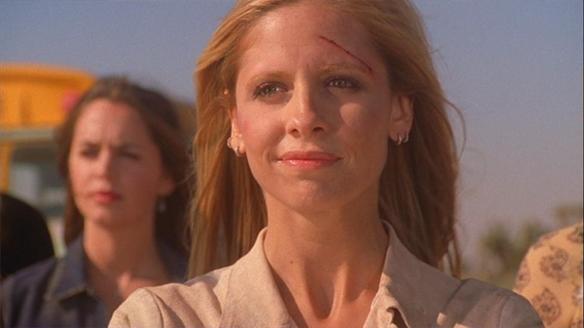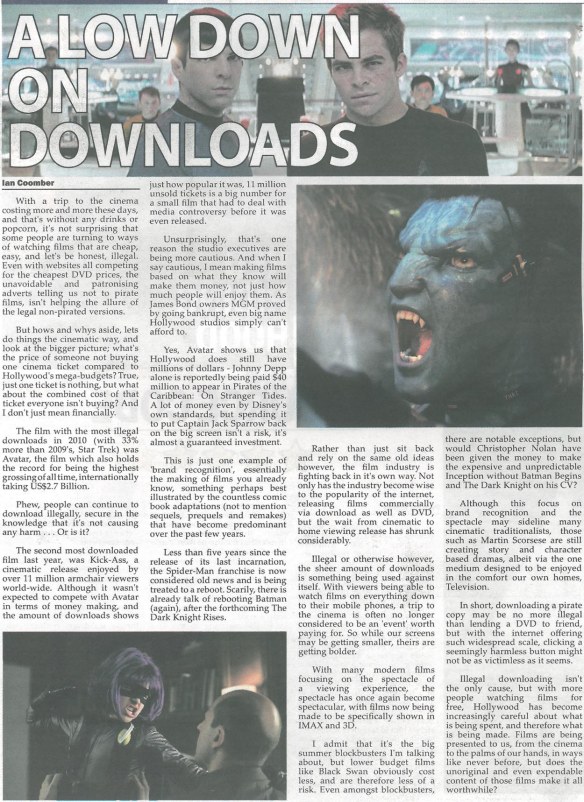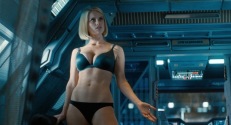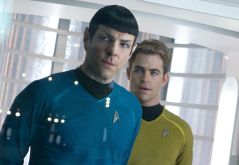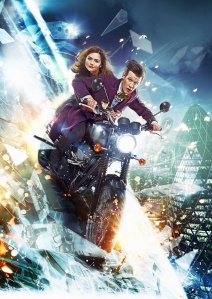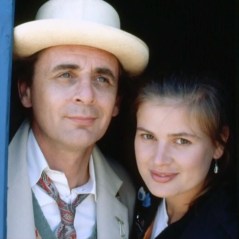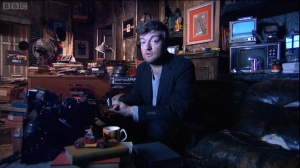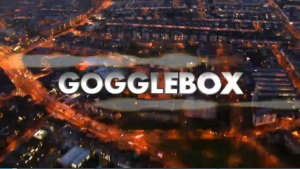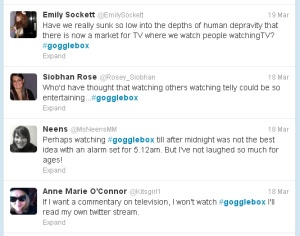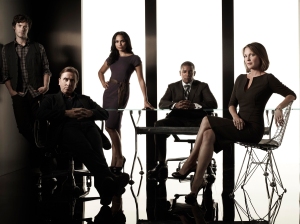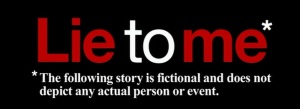After years of waiting season one of Star Trek: Discovery has finally been broadcast (or rather made available to stream) in its entirety. The first Star Trek adventures to hit the small screen since the cancellation of Enterprise in 2005, fans were excited not just to see Trek back where it belongs but also to how it would have evolved after its absence, especially in the wake of the likes of Firefly and Battlestar Galactica.
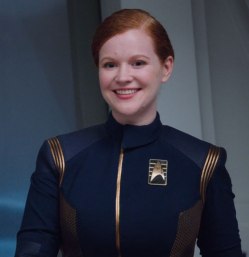
Beating Swear Trek at its own game…
The result was a series which was full of action, drama, suspense, even a little humour, and to quote Cadet Sylvia Tilly was just “so fucking cool”. As with the best of Trek before it Discovery also dealt with important and contemporary humanitarian themes, in this case the rise and consequences of nationalism. Something which is obviously designed to resonate with the current climate of Trump and Brexit, yet was metaphorical enough to be subtle in its comparisons.
At its heart it was also a very human(oid) story which put the emphasis on characters above all else. A choice I can only applaud it for and was at the heart of its success, but which also came with its own complications. Although it is hardly the first season of any show to take its time finding its feet, this is just one way in which the series suffered from its over reliance on misdirection.
The series’ delight in its playing with the audience’s expectations began right from the very beginning when the title of the first episode ‘The Vulcan Hello’ was announced. Ostensibly referring to the celebrated greeting which has transcended its way into pop-culture lexicon, “Live Long and Prosper”, but it in fact translates to what is essentially “go in all guns blazing”, the polar opposite of a race so peaceful they’ve adopted vegetarianism as one of their commandments.
Although this is one example of many which worked by taking something so established into an unexpected direction and fitting in with the narrative of the episode, others were not as succesful. In fact there are several which aren’t simply because they fall into the category of just being one too many.
When used correctly, misdirection can be one of the most powerful tools in a creative arsenal, something superbly exemplified by Metal Gear Solid 2. One the most highly anticipated games ever when it was released on the Playstation 2 back in 2001, the advertising campaign focused on two main elements. The first was that of the gameplay, and how the technology had progressed even since the release of the original Metal Gear Solid in 1998. Three years and an updated console later and an impressive nine minute cinematic trailer teased the literally game changing ways in which characters interacted with elements such as rain and shadows, and could shoot even the smallest of elements, including individual light bulbs to hamper the enemies’ vision.
The second was of course the main character of Solid Snake. The protagonist of the games predecessor, Snake was a military veteran who, thanks to being a clone of another veteran, was quite literally born to undertake this kind of stealthy yet action-oriented mission. Having already established the importance emphasised on narrative as much as gameplay in the first game, this series (which now comprises five main, and countless spin-off titles) is one which has created an entire world with complex characters, of which Snake is an integral part.
When players finally had their hands on MGS2 however, after completing the short opening chapter they were dumbfounded when they discovered that the majority of the game took place in a completely different environment and were now controlling a brand new never seen before character, the naive rookie known as Raiden. Not only had the advertising campaign been almost exclusively taken from this initial chapter, but the nine minute trailer actually conveys its entire narrative (Snake infiltrates a tanker which is also boarded by a special ops team betrayed by Revolver Ocelot who destroys said tanker in the process of stealing the Metal Gear) to the point that if you’ve seen it you wouldn’t actually need to play this opening in order to understand the whole/main story.
Despite everything the game had done in terms of its technological and world-building leaps, this instantaneous almost 180 degree flip is still one of the games most defining moments. Gamers expectations were completely cast aside as they had to reimmerse themselves in what the series creator Hideo Kojima later revealed to be a more thorough examination of Solid Snake by forcing the player to view him (he continued to appear occasionally throughout as a non-playable character) from a different perspective. The rug had well and truly been swept out from under them, and everything from here on in was completely new.
Obviously times have changed since this trailer was given away as a magazine freebie on VHS and this level of secrecy would be virtually impossible in the current age of social media and spoiler alerts, but even taking this into consideration the fact that Discovery went through so many minor changes during its run resulted in a drawn out period of confusion and continued adjustment so that even several episodes in the viewer is still not fully up to speed with what is happening.
The series began with the unconventional ‘The Vulcan Hello’/’Battle at the Binary Stars’ which were more of a two-part prologue than pilot. Like MGS2 it was from these episodes which the bulk of the trailer footage had come from, even though keen fans would already be aware that despite Discovery continuing in the tradition of Deep Space Nine, Voyager, and Enterprise and take place on a ship (or station) bearing the same name as the series, these first two episodes focused on the USS Shenzhou instead.
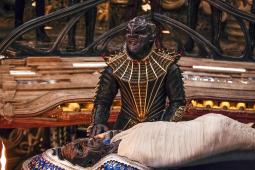
It was a good day to die…
By knowing that the Shenzhou would not be what is often refered to as the “hero ship” of the series, the fact it was abandoned by the end of ‘Battle’ came as no surprise. The death of T’Kuvma however, someone billed beforehand as a Klingon leader, would have his own comic miniseries – written in conjunction with the writers of the TV series itself – and even instigated the events of an interstellar war, was unexpected.
(Again, this is something comparable to MGS2 in that T’Kuvma and his ideals are discussed from an outside perspective, but are done so all too infrequently.)
So in addition to the series’ main character having been sentenced to life imprisonment, by the start of the ironically titled ‘Context Is For Kings’ rather than a big single change the audience know they are yet to be introduced to the majority of the regular cast whilst at the same time now trying to figure out how much of what they had essentiality been ‘promised’ from the advertising campaign would still feature.
Prior to its initial broadcast, the build up promised that the show would be set during the war between the United Federation of Planets and the Klingon Empire which was alluded to in The Original Series, and even included distributing cast announcements and promotional material relating to the Klingons, such as T’Kuvma, as much as those to the latest crew of Starfleet’s finest. Watching through the series itself however, and it becomes obvious there is a difference between Discovery being ‘set’ in, and ‘about’ The Klingon war.
Somewhat surprisingly in this day and age of almost exclusively serialised storytelling, the pilot and finale episodes of Discovery may revolve around the instigation and ending of the war to bookend the season, but by weaving a tale in which the Discovery characters will change and grow through their experiences of love and loss however, for the majority of its run the Klingon war is little more than a McGuffin.
Ash Tyler’s true identity as the Klingon Voq was predicted long before its ‘shock’ plot twist reveal, although where many would have expected the sleeper agent to play a significant role in major galactic events (something which had previously been seen with Arne Darvin in both TOS and DS9), instead the repercussions of his true existence only served to affect the crew of the Discovery; namely his murder of Dr. Hugh Culber, and in his relationship with Michael Burnham.
As mentioned before, this is a choice I admire and respect, but is also something which they could/should have made more of rather than sharing its screentime alongside the reveal of ‘Captain’ Lorca’s true origins which may not have been as predictable, but like the entire mirror universe arc was only linked to the rest of the season thematically, and its inclusion added to Discovery‘s restlessness.
Had this particular twist have waited until season two it would not only have had a bigger impact by receiving the full attention it deserved, but also by playing the long game Lorca would have had time to become more of an established character. In addition many saw the seeds in earlier episodes as Trek casting its spotlight on the serious issues surrounding the consequences of war such as PTSD, which also caused disappointment when it became obvious they were sewn for nothing more serious than yet another narrative curveball.
All of which make up for a season of science fiction television which takes far too long to find its feet before suffering from an overambitious desire of filling its episodes with too much too fast. Much like Dollhouse it’s almost as though the second half of the season was made in certain knowledge it would be cancelled immediately, with more than one episode setting up the next reveal before it’s finished exploring (or even completely ignoring) the repercussions of last.
Although each of the individual arcs which run throughout the season all make for fascinating viewing, hopefully so many different threads each vying for the title of biggest misdirection is a lesson Star Trek: Discovery can learn from in later seasons.

